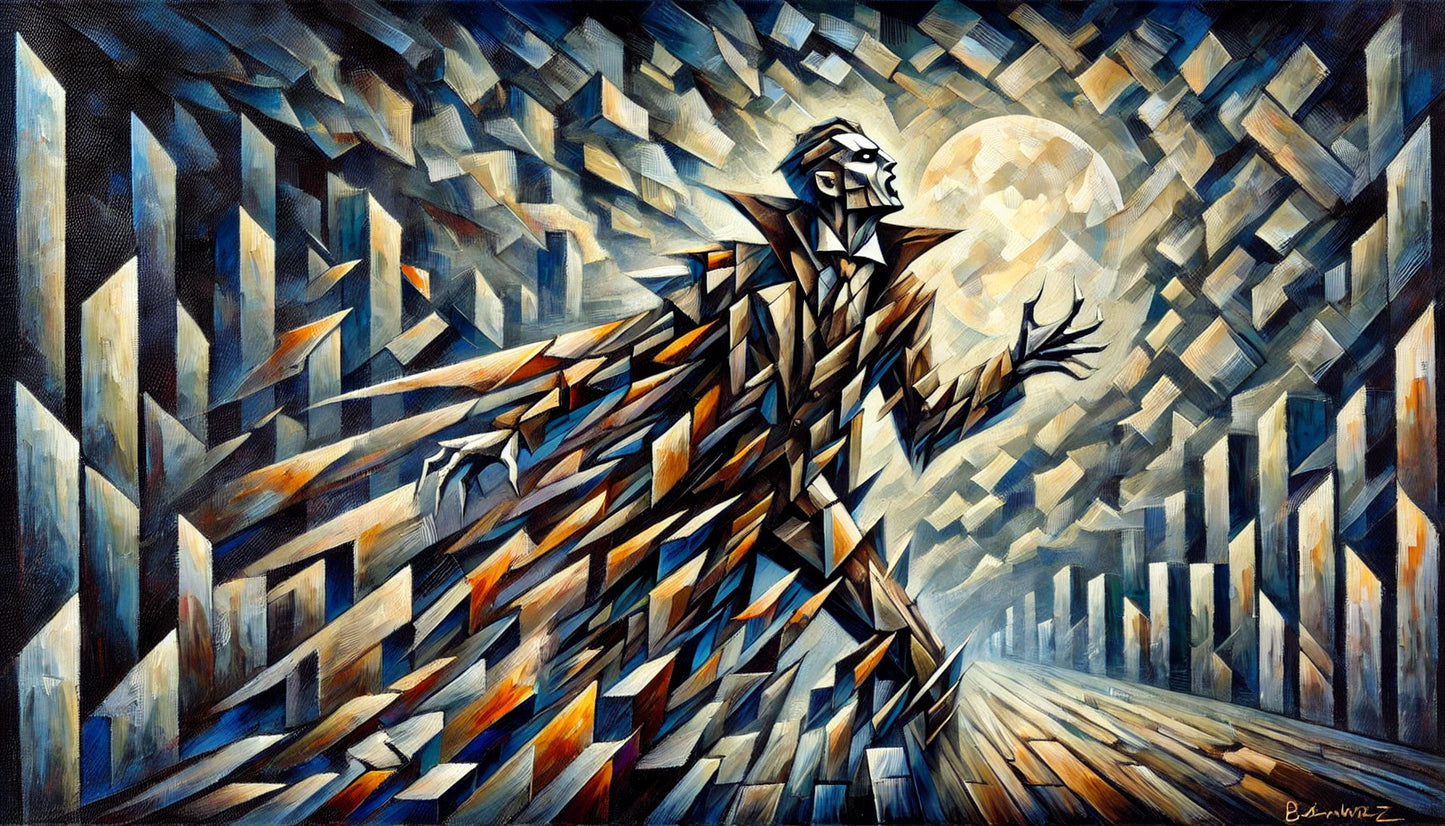Return to Shadows of Form
Return to Shadows of Form
Kubizm
Wampiry i nietoperze and Fantastyka i science fiction
Lead time
Lead time
⏳ Delivery time
The order processing time depends on: the production technique, the drying time of the paints, the size of the image and any hand-finishing and protection.
🖼️ Art print on canvas
-
High quality canvas printing :
- Canvas - synthetic canvas 260 g
- Natural Canvas - 260 g cotton canvas
- Stretching the canvas onto the frame
- Quality control and packaging
Total completion time:
🎨 Oil Giclée Reproduction (print + hand-finished)
-
Giclée print on canvas:
- Canvas premium - natural cotton canvas 360 g
- Pigment print drying
- Hand finishing: texturing and oil painting
- Paint drying (depending on layer thickness, medium type and format)
- Stretching the canvas onto the frame
- Quality control and packaging
Total completion time: –
🚚 Ready-made paintings – shipped within 24 hours
Our gallery has a special category called "Ready-Made Paintings" - these are works available immediately, already stretched on a frame or in a ready-made frame.
- They are 100% ready for immediate shipment
- Safe packaging in a reinforced cardboard box
Shipping takes place within: from the date of booking the order.
Image format: Reprodukcja Oil Giclée
Need a different size? Contact us.
Couldn't load pickup availability
1. Title
"Return to the Shadows of Form"
2. Description of the image
The vampire emerges from geometric chaos—not as a creature of flesh and blood, but of shadows and shapes. Its silhouette is composed of fragments of triangles, trapezoids, and twisted lines—as if rebuilding itself from memory. The background is a labyrinth of distorted structures—walls, trees, sky—all shattered, as if the night had been filtered through a mind brimming with memories. It's a return not to a place, but to oneself. In silence and fragments.
3. Technology
The painting is oil on canvas, with impasto lending depth to the geometric forms. Shading is achieved by layering angular shapes – the texture creates a space where light and shadow compete for dominance.
4. Style
Spatial Cubism with a symbolic core—the boundaries between figure and environment blur. This is a style that doesn't seek to represent—it seeks to suggest. It's an image interpreted not by sight, but by intuition. The art of the fragment as a whole.
5. Colors
Deep blacks, muted grays, navy blues, and sharper accents of scarlet and silver moonlight dominate. Colors don't describe things—they create their echoes. Each shadow isn't the absence of light—it's the presence of another dimension.
6. Invoice
The texture is intense in its layers—the canvas practically vibrates with deep paint creases. The vampire's figure is built of texture, not contour. The closer you look, the more the painting disintegrates—and the more you understand it.
7. Inspiration
-
Lyonel Feininger – for geometric light in a night landscape.
-
Paul Klee – for the symbolic breaking of space.
-
Kafka in painting – for return as transformation, not repetition.
8. Message and interpretation
"Return in the Shadows of Form" isn't a classic return—it's an attempt to piece together oneself from pieces that no longer fit. It's the story of a being who returns not as the same, but as someone new—composed of ruins and visions. It's a return not for closure, but for acceptance.
9. Originality
A painting unique in its opacity—it tells nothing directly, yet it touches something profound. "Return in the Shadows of Form" is not an illustration, but an experience. In it, form is not a tool—it is the protagonist.
Share


